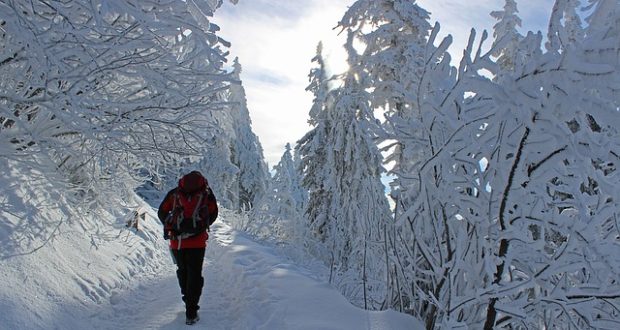Blog
5 Winter survival skills that will provide you with warm, dry and alive
5 Winter survival skills that will provide you with warm, dry and alive
Any other climate provides a unique set of challenges in the survival scenario, and winter is no exception. If you are not too careful, the frosty wind and cold can immobilize you with frostbite, and then kill you with hypothermia.
In this article we will look at five specific skills that you absolutely need to have to survive when you get stuck outside in winter.
1. Fire lighting … and maintaining it
Knowledge about how to start a fire is an important skill in every survival scenario, but it is very important in winter. If you are ever wet and cold, a fire can be the only thing that gives you a chance to survive. You also need fire to dry any moist clothing.
Unfortunately, it is more difficult to build and keep the fire in winter. The soil is often covered with snow or ice, and the wood, which is located above the ground, is also saturated with moisture. In addition, there may be strong winds that make every spark that you managed to create in an instant. So how do you start a fire in winter?
Cotton balls
The answer is to keep cotton balls, which are coated by petroleum jelly all the time – especially in winter. They are highly flammable and will be a lifeguard in a winter survival. (They are also inexpensive.) You will also need something that will cause spark, for example iron. But this is only a solution of lighting. How can you keep this fire?
Build a pit in the snow, which has a depth of about two feet. This happens that the walls of the pit protect the flames from the wind. The bottom of this bottom should then be covered with logs and sticks. Then set some Tinder and petroleum jelly cotton on these logs.
If all the wood you find is already wet, use a knife or an ax to cut in it and check if there is any drier burns that can be obtained from the inside. Then set the kindling in the pyramid. This will dry the wood and then burn faster.
The above technique can save your life.
2. Building a warm and warm shelter
This is another survival skill, which is important in every situation – but probably more in the winter scenario. In winter – unlike other seasons – you must keep warm and dry. For these reasons, it would be wise to spend more time working on a winter shelter than, say, summer shelter.
Your shelter should be built in a flat and higher ground, with a lot of trees to cover from falling snow and wind. Trees also provide natural resources that you need to build your winter shelter.
One of the best winter shelters is one that has a natural cover, for example, tree branches. You can dig the trunk of a tree under the lowest branches so that the branches spread over you, protect you from snow and wind. The snowy walls will then provide additional protection, and you can even set a small place to break down a small fire.
3. Maintaining the right body temperature
In winter it is easy to become too cold – but also too hot. Wear the outer layer of the shell that deviates the wind and cold, the insulating layer that keeps the body warm, and then the last layer that sticks to the skin. When you travel through snow with all these clothes, you can easily overflow. Then sweat will freeze and threaten both frostbite and hypothermia.
Pay special attention to body temperature and add and remove layers if necessary. If it falls snow or rains, wear all three layers so that the shell layer can keep the two internal layers dry. But when you travel to the sun or work on building a shelter, remove one or more layers so that your body can cool down and avoid sweat.
4. Making snow goggles
While most often we use sunglasses during summer conditions, ice and snow during winter can reflect the sun’s rays back to your eyes – basically dazzling you. If you do not have snow goggles or sunglasses with you, you need to know how to make them, from natural resources.
The easiest snow goggles for construction are made of birch bark. Birch bark is the best for snow goggles, because it can be removed from the trunk of a tree in sheets. Cut the bark sheet, then cut small gaps in it.
Then cut the holes into its sides so that they can be tied around the face. These simple DIY goggles will provide you with your eyes that they need when the sun is not.
Emergency backup power you can rely on
5. Building a pair of snow rockets
The snow rockets spread the weight in a larger area so that the foot does not suck completely in the snow. If you’ve ever tried to walk in the winter forest without snow rockets, you know how exhausting and time consuming it is. Snow rockets will save a lot of time and energy.
If you don’t have snow rockets with you yet, you need to do a little yourself. The simplest form of snow rockets are the Konar groups that are associated and then hit on the feet. More traditional snow rockets will require some time and energy. You need to find a long, flexible stick that you can bend and then tie at the end, and then crossing the inside of the snow with more sticks, vines and/or rope.
If you successfully build a few snow rockets, you guarantee that you will be able to cure yourself much faster.

